It was nearly sunrise when I stepped off the rocky trail. I switched off my headlamp and ambled into the clearing. That’s when I saw it for the first time: Yosemite’s Half Dome.
I gaped at how it sparkled from being kissed by the day’s first rays. Growing up in Oklahoma, I’d long admired it only in the iconic photos of Ansel Adams.
Tired from days of trekking with a friend to Cathedral Lakes (where we had several too-close encounters with black bears), I was reinvigorated and inspired at the shining face of this towering piece of granite. John Muir’s words — “How glorious a greeting the sun gives the mountains” — resonated with my soul.
I’ve had many life-changing moments in National Park Service (NPS) lands. Seeing a mother and baby moose traipsing through Glacier National Park reminded me of the universal nature of caring for life. On the other hand, nearly falling to my death off a slick rock ledge at Grand Staircase–Escalante National Monument brought me face to face with my mortality.
I’m not alone in my love for these awe-inspiring places. Filmmaker Ken Burns calls the national parks “America’s best idea.” President Theodore Roosevelt said of the park that bears his name, “It was here that the romance of my life began.”
These remarkable spaces preserve our nation’s past — both celebrated and hidden — while protecting our biodiversity and cultural traditions for future generations.
In a time when many of us are moving too fast and spending too much time indoors, the NPS offers opportunities to slow down and absorb the magic found only in nature.
In honor of NPS’s 100th anniversary this year, here’s a small sampling of national parks — some popular, some obscure — where you can marvel at sunsets, creeks, forests, and the rest of nature’s delights.
Old Faithful

Where: Yellowstone National Park; Wyoming, Montana, and Idaho.
Who: Campers, hikers, and tourists looking for a leisurely experience.
Why: Established in 1872, the flagship national park spans parts of three states — Idaho, Montana, and Wyoming — and offers a chance to explore both human and ecological stories. Native Americans began using the area as home and hunting ground more than 11,000 years ago. The beloved geysers evoke Earth’s volcanic history while alpine tundra, mountain meadows, and sage-steppe grasslands showcase the planet’s varied landscapes.
The park houses the largest concentration of mammals in the lower 48 states, including pronghorn, bighorn sheep, coyotes, and mountain lions. It’s also a well-known conservation area for grizzlies, gray wolves, and bison.
When: Spring features abundant wildlife sightings, roaring waterfalls, and extreme weather shifts; summer brings the roar of crowds. Fall presents nature’s shift into slow-down mode; winter offers solitude.
How: Take in colorful wildflowers, grasses, waterfalls, and geysers by traversing the trail from Fairy Falls to Imperial Geyser. Stop and snap a selfie atop Picture Hill and marvel at the park’s grandest geothermal feature, Grand Prismatic Spring.
Cost: Park admission is $15–$30.
Difficulty: Easy.
City Dweller
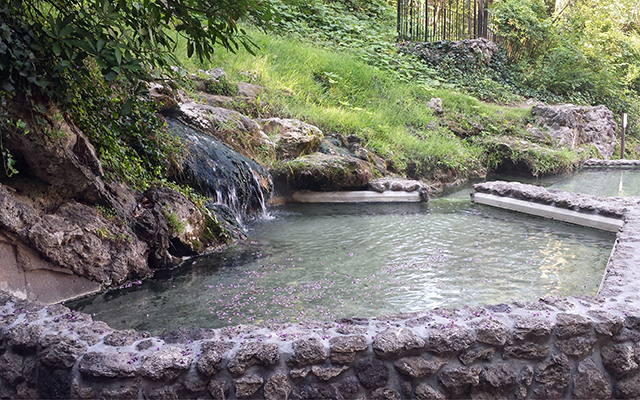 Photography by Wikimedia/brandonrush
Photography by Wikimedia/brandonrushWhere: Hot Springs National Park, Hot Springs, Arkansas
Who: Campers, hikers, and picnickers seeking a spa-like experience.
Why: Thermal waters run deep in the only national park located in a major urban area. Take a tour of the park’s geothermal features by meandering along the foot trails and lounging in hot water at one of the legendary bathhouses.
When: Year-round. Fall offers stunning foliage; February yields plentiful wildflower sightings.
How: Each of eight spas offers services ranging from massage to facials and, of course, a soak in the famous hot-springs waters.
Cost: Park admission is free; camping and spa services vary.
Difficulty: Easy (unless you find relaxing a challenge).
En Vogue
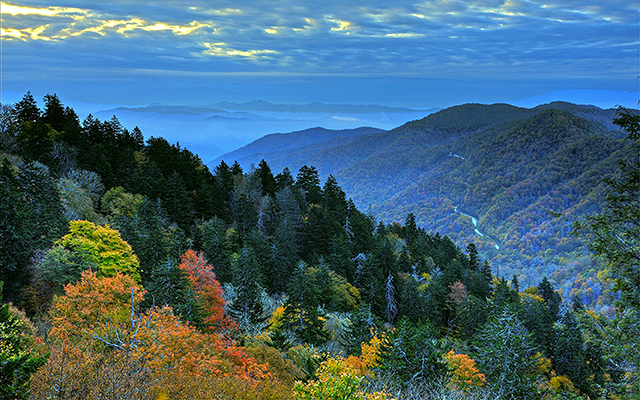
Where: Great Smoky Mountains National Park; North Carolina and Tennessee
Who: Explorers of all ages who are wowed by old-growth forests, Southern culture, and endless mountain views.
Why: Rivers! Sunsets! Bears! Oh my! Spectacular ridges of trees, a plethora of animals and plant species, and remnants of the rich Appalachian mountain culture make this sprawling park the most visited in the system.
When: Open year-round; May through September are popular months.
How: Anglers looking to hook up with some beautiful trout or smallmouth bass will love the 2,900 miles of streams. Thanks to the protections offered by the National Park Service, most waterways remain at or near their capacity throughout the year.
Cost: Park admission is free; $6.50 and up for a valid Tennessee or North Carolina fishing license.
Difficulty: Easy, but catching fish is never guaranteed.
New Kid on the Block
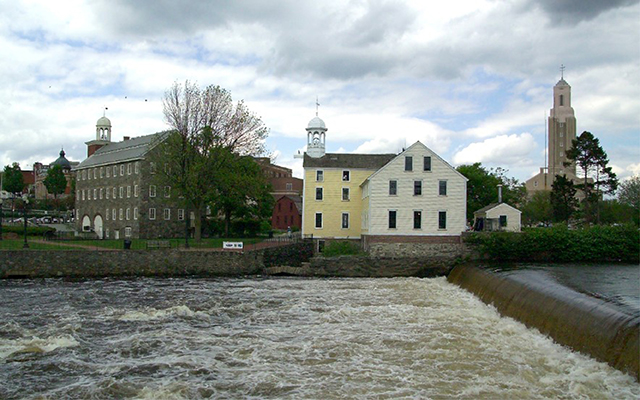 Photography by National Park Service
Photography by National Park ServiceWhere: Blackstone River Valley National Historical Park; Massachusetts and Rhode Island
Who: History buffs, cyclists, and paddlers ready to tackle Class I to III rapids.
Why: Explore the home of the American industrial revolution by bike or waterway in one of the newest additions to the National Park Service system (established in 2014). The Blackstone River Valley of Massachusetts and Rhode Island showcases the transformation of the United States from farm to factory. Despite a century of development, the area is home to a plethora of rivers, wetlands, forests, and fields.
When: Year-round.
How: Cruise along the Blackstone River via the mostly off-road Blackstone River Bikeway and enjoy views of waterfalls, marshes, and plenty of local wildlife. When it’s finally complete, the bikeway will be the region’s premier recreational cycling area, extending 48 miles from Worcester, Mass., to Providence, R.I.
Cost: Free.
Difficulty: Easy.
Gentle Giant
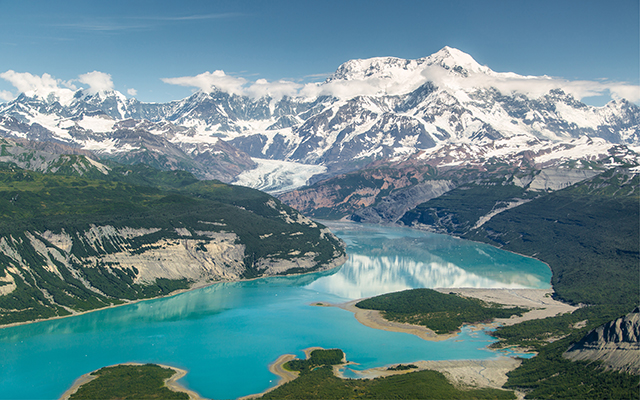 Photography by Neal Herbert
Photography by Neal HerbertWhere: Wrangell–St. Elias National Park and Preserve, Copper Center, Alaska
Who: Backpackers seeking a chance to chill out on a glacier.
Why: Its 13.2 million acres of rugged landscape includes four mountain ranges, nine of the 16 highest peaks in the United States, and 150-plus glaciers — one larger than Rhode Island. It’s home to a variety of wild grasses, dwarf shrubs, and coastal spruce forests, as well as wildlife such as caribou and sea lions.
When: June through September
How: You can tour the park on your own, but a four-day outfitter-guided, base-camp-style trek offers you a chance to enjoy all the peaks and valleys of hiking with an incredible payoff: exploring Fan Glacier.
Cost: Park admission is free; guided trek is $1,495/person (airfare and lodging before and after trekking not included). www.trekalaska.com
Difficulty: Easy to moderate.
Remote Getaway
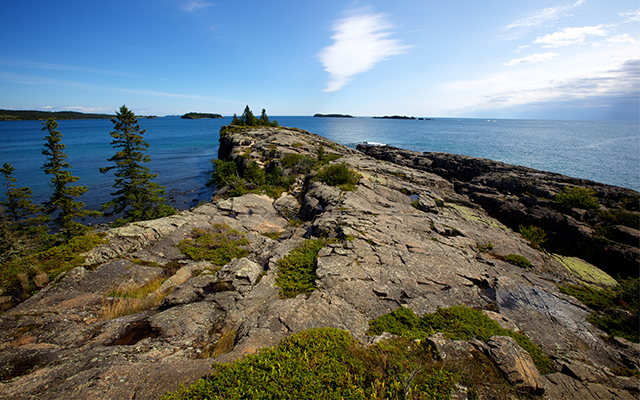
Where: Isle Royale National Park, Houghton, Michigan
Who: Extreme solitude seekers will enjoy exploring this rugged, isolated island.
Why: Howl with the famous and soon-to-be-extinct wolves in one of the few national parks not accessible by roads. Surrounded by Lake Superior, Isle Royale is an oasis for boaters, kayakers, canoeists, and scuba divers. Land lovers can enjoy hiking paths, lighthouses, and copper-mining sites while keeping their eyes peeled for moose, loons, beavers, and foxes.
When: April 16 through October 31.
How: To reach the island, you’ll need to board a boat at one of the harbors in Michigan or Minnesota or have your own. Seasoned divers can enjoy a unique experience by plunging below the surface of the biggest Great Lake to explore shipwrecks like the America and Monarch. Snorkelers can even reach wrecks like the Five Finger Bay fish-tug site. Kayakers and canoeists can navigate Lake Superior as well as the island’s inland lakes and streams. For a more leisurely experience, jump aboard the MV Sandy from Rock Harbor for a boat trip to Hidden Lake Trailhead or Passage Island. Both trips include guided hikes.
Cost: Daily user fee is $4; diving trip prices vary. www.nps.gov; www.isleroyalecharters.com
Difficulty: Easy to difficult.
Bona Fide Beauty

Where: Joshua Tree National Park, Twentynine Palms, California
Who: Outdoorsy types who still haven’t found what they’re looking for.
Why: Climbers, geologists, and archaeologists rejoice at the sight of the extraordinary landscape that made this place famous. Whether you like stargazing, birding, or simply admiring the many stunning rock formations (Skull Rock, for example, is named for its two hollowed-out eye sockets), there’s much beauty to behold in this desert setting.
How: No trip to “J-tree” is complete without getting vertical. With more than 400 rock formations and 8,000 routes, the park is a popular destination for “dirtbags” and “gabbys” of all abilities, who scale the likes of Quail Springs, Lost Horse Wall, and Trashcan Rock.
When: Spring, fall, and winter.
Cost: $20 entrance fee; camping is $15–$20/night. Cliffhanger Guides (www.cliffhangerguides.com) offers half- and full-day climbing outings for $115 and up.
Difficulty: Easy to difficult
For help finding the right park for your adventure, visit www.findyourpark.com or www.nps.gov.
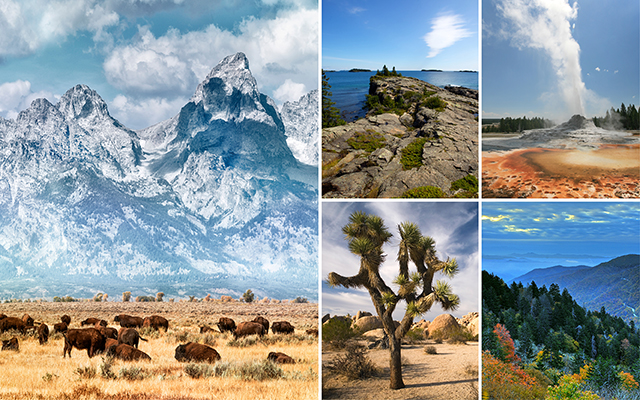
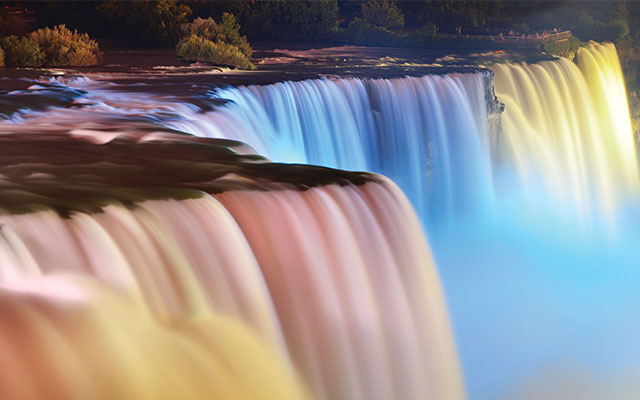

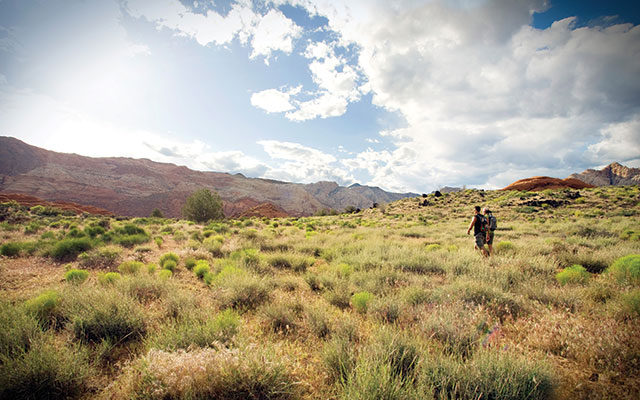
This Post Has 0 Comments